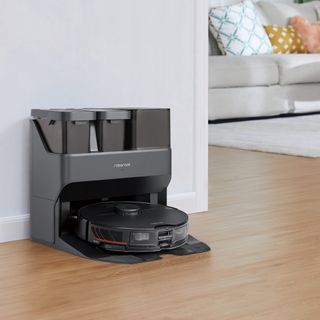A great cordless drill is hard to beat. They are useful in so many situations, even outside of the obvious. Since there are a seemingly endless number of drills out there to consider when buying it can be quite a daunting task to figure out which one to buy. Do not fret intrepid do-it-yourself'er. We are here to point you in the right direction and help you find the best cordless drill for your project.
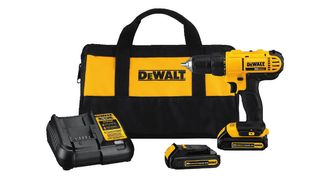
The DeWalt DCD771C2 does a great job of balancing size and weight for comfortable use. Along with that, its half-inch keyless chuck allows you to quickly swap out the drill bit for a driver with little fuss. The addition of a two-speed transmission and the adjustable clutch coupled with a variable speed trigger will help you have full control while getting the job done.
The motor gets plenty of torque when utilizing the 20v lithium-ion battery. Speaking of the battery, it is a 1.3 Ah unit, so when doing intensive jobs, it may not be the longest-lasting battery out there. However, if purchasing through the link above, you will get a second battery to keep juiced up on the included charger. Keep everything together in the durable bag, and you'll be prepared to tackle almost any job at a reasonable price.
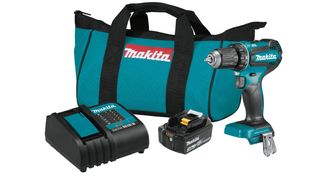
Makita has a fantastic drill/driver in the XFD131. It's a reasonably compact tool with a nice balance, and the motor build has solid metal gears and metal housing which gives 440 lb torque for this unit. Driving this power drill is an 18v and 3 aH battery, keeping you moving through your tasks.
Using the link above nets you a charger, utility bag, and only one battery. Whether you are drilling or driving with the half-inch keyless chuck, the dual-speed transmission, and variable speed trigger is going to be able to keep your task list short. The only things that are keeping this Makita from taking the top spot are its price, only getting one battery instead of 2, and the battery is only 18v instead of the beefier 20v.
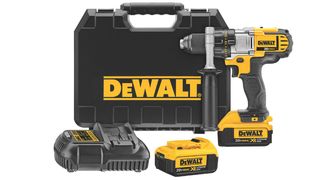
When it's time to step up your tool game and handle more intensive projects, then reach for the DEWALT DCD980M2. This drill/driver comes with all of the features found on the overall winner only it improves on them. The 20v 4 Ah battery will give you plenty of lasting power. With the purchase, you'll get two batteries and a charger to keep your back up ready to go should you drain the first. Another addition to this tool is the hammer drill feature. This feature helps immensely trying to get through varies masonry tasks. DEWALT also includes a 360-degree side handle to ensure full control when the project calls for it.
You still get the LED light, variable speed trigger, half-inch keyless metal ratcheting chuck, as well as the 3-speed transmission. Keep all of this in the included heavy-duty bag, and you'll be ready to take on the biggest of jobs with your drill.
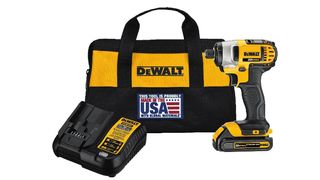
When you are looking for an impact driver that can do almost any task set for it and you want it at a reasonable price, then look at the DEWALT DCF886C1 MAX. This power tool is driven by a 20v 3 Ah lithium-ion battery. You'll get a fast charger along with it as well as a sturdy bag to keep yourself organized.
The DCF885C1 is a compact (5.55" front to back) and lightweight (2.8lbs) but packs a punch when called upon to do some drilling. Put the necessary bit into the quick change quarter-inch hex chuck and go to work. Its motor can have a no-load speed up to 2,800 rpm, impacts per minute up to 3,200, and max torque at 1,400 in-lbs. Control it all with a clear view using it's triple LED light setup and a variable speed trigger.

Makita's impact driver makes a convincing argument for the top spot. Only to be held back by cost, lower voltage battery (18V 3 Ah), and weight of the tool. The XDT131 is five inches front to back and weighs in at 3.3lbs. It has the same quarter-inch quick-change chuck and variable speed trigger. It utilizes a dual-LED light helping you to keep an eye on the task at hand.
The motor on this unit has a slight edge over the DEWALT with speeds up to 3,400 RPM, and 3,600 IPM, delivering up to 1,500 in.lbs of torque. This power tool is going to have no troubles keeping up with strenuous tasks thrown at it, and should its battery die you'll be able to fully charge it in 30 minutes on the included fast charger. Your purchase will also net you a durable canvas bag for secure transfers between job sites.
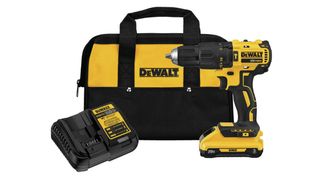
When looking for a trusted hammer drill that won't give you sticker shock, then look no further than the DEWALT DCD778L1. The brushless motor provides excellent power and plenty of torque to ensure you won't be let down when you tackle your projects. Driving the motor is a 20V 3 Ah lithium-ion battery that you can keep juiced up between jobs with the included charger. You have a two-speed transmission, 15 clutch settings, as well as a variable speed transmission. Ensuring a clear view, it has an LED light that comes on when you pull the trigger.
The half-inch keyless chuck is a reliable all-around option for this hammer drill. When you are ready to tackle setting anchors into concrete or another masonry, you can switch over to the hammer drill setting. Once you make that change, you'll power through with no troubles. Pack it all into the canvas bag and wait until the next job.
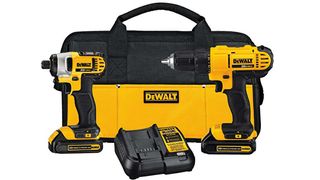
As with most purchases, if you are in need or might require a drill/driver as well as an impact driver, then you should consider a kit. The DCK240C2 kit from DEWALT is a great option to save you some money on the two tools that topped our best overall for each of their respective categories.
You'll get the DCD771 and DCF885 in addition to two 20V batteries, the charger, and a handy canvas bag for storage. When you have both tools available not only will you have what's needed to get the job done, but it also can be a huge time saver. All this without the need to change bits from drilling to driving because you can have one of each loaded. Just drill the pilot hole with the drill, then reach over and grab your impact driver to set the screw. Simple, quick, and done while saving some cash picking up this kit.
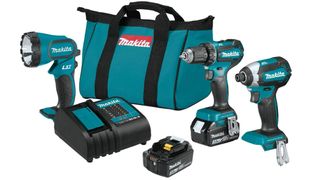
Just as the Makita drill/driver and impact tools were runner, so is the kit. Again, the only hold back to put this in 2nd place is price, battery voltages, and fewer LED lights for viewing your work. However, it again makes up for the battery only being 18V by bumping up to 3 Ah and opting for 2 LED lights rather than three by including a dedicated flashlight that uses one of the 2 included batteries.
You'll get a slightly more powerful impact driver than the DEWALT by increasing the power to 1,500 in-lbs. Along with the tools and flashlight, your kit purchase nets you the two 18V batteries, a charger, and a canvas bag for storage. Makita XT335S is a fantastic option for a multi tool kit. You'll pay a bit more to get it over the DEWALT that took the overall position.
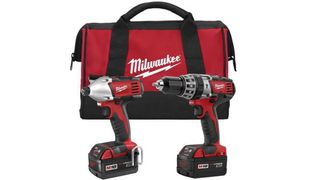
When the job calls for the most durable and versatile power tools, and you'd like to save a few pennies when possible when buying as a kit, then the Milwaukee 2697-22 M18 is what you need. You get a drill/driver with a half-inch keyless chuck, three-speed transmission, variable speed trigger, and it's all driven by frameless rare-earth magnet motor in an all-metal case. As mentioned, it's a three-speed transmission because you have a hammer drill feature available as part of this kit.
Along with the drill/driver, you get Milwaukee's light-weight compact impact driver. It features the same frameless rare-earth magnet as the drill/driver, only with the quick change quarter-inch chuck. The motor will push 1,500 in-lb torque from it's 18V 3 Ah batteries. You'll pay a bit extra for the durability that Milwaukee is known to provide. With your purchase, you will get two batteries, the charger, and a canvas bag along with your two power tools.
Recap
Power tools may have once been thought to be just for construction workers. However, now a good cordless drill is a must for most anyone who isn't afraid to do the job themselves. There are so many options out there when it comes to buying a drill, but not all are created equal.
When it comes to power tools, the ol' adage of "you get what you pay for," might be the most applicable. Stick with well-known brands like DEWALT, Makita, Milwaukee, and Black + Decker and you should be good to go. A few other brands you can be safe to look at should you see a price you like are Rigid, Hilti, Porter-Cable, and Bosch. So, whether you are building a house or just fixing a broken shelf, keep your drill battery charged and ready for action.
Things to consider when picking a cordless drill
There are a lot of variables that can go into picking the drill that best fits your needs. A phrase you will frequently hear in the tech world is "ecosystem lock-in" and guess what, that is something that permeates even the power tool world. All major cordless power tool companies are producing tools that can all use the same rechargeable battery.
So if you buy a drill, but could see a use for a cordless reciprocating saw, or maybe a circular saw, impact wrench, oscillating tool in your future, then you will want to keep those in mind when looking at the brand you buy. Let's get into some things to consider when looking for the drill you need.
For what will you be using the power tool?
You may have seen in our "Best of" section above, that there are a few different drills out there. Do you need a drill, an impact driver, or a hammer drill for the task at hand? While there are specialized tools, if you won't be drilling into concrete or brick walls regularly, then you are probably better suited looking at a drill/driver with a hammer drill setting rather than buying a hammer drill alone. A drill/driver is a versatile tool that can drill a hole, set a screw-like a screwdriver, or drive a nut. Keep in mind that a good bit set, the part you put into the end of the drill/driver for the task at hand, with a variety of components is a must regardless of the tool you choose.
As for hammer drills, they are built for driving an anchor, a screw, or bolt into a masonry material. Should your walls be made from concrete and you would like to hang a picture, a hammer drill is the best tool for the job. A quick tip, if you won't be doing much masonry work you can likely get by with a regular drill and a masonry bit. The hammer drill does as the name states and will make tiny hammer motions with the motors onto the bit to help force the drill bit through whatever material on which you are working.
An impact driver is a tool that's primary function is just that, driving a screw or nut. It's lighter weight and more compact than your average drill/driver. The quick-change chuck makes swapping from a Philips to a socket adapter simple. The motor is designed to give maximum torque when what you are driving starts to stick or get tight. It will provide quick bursts of high strength turns to get that last few threads secured. Let's dive into some of the nuances of words you may come across when buying the tool that makes it right for you.
Battery tech
There are few things more important when picking out your cordless power tool of choice than the battery. As was mentioned in the "Things to consider" section, the tool/battery ecosystem is paramount when choosing what brand to go buy. As for the batteries themselves, you generally have two choices, NiCad, and lithium-ion. NiCad cells have been around for decades and powered many different products. They are durable and, for the most part, quite reliable. However, they have a higher discharge rate as well as less power density. Meaning you'll be recharging them more frequently.
Lithium-ion batteries are in most modern battery-powered electronics. They charge quickly, have longer lifespans, and have a better discharge rate. Another great benefit is that they are smaller and lighter, all while providing the noted benefits.
The other consideration when choosing your battery is the voltage (V) and the ampere-hour (Ah). There are lots of cordless battery options out there, ranging from 3V to 48V. Most of your consumer drill/drivers will be in the 12V to 20V. However, a good rule of thumb is that the higher the voltage, the more torque (think power) it will deliver. So you'll likely want to opt for an 18V or 20V version. The other measurement to watch for is the ampere-hour. You can think of as the capacity of the battery, or how long it will last. That means when you can look for a balance of the right voltage for you and a higher ampere-hour to power your jobs. One caveat to keep in mind is also that the higher Ah and voltage, generally, the more bulky battery and longer it may take to charge.
Chuck type
The chuck is the part of the drill that will be holding the bit (drill, driver, or adapter). Your typical drill/driver you pick up at your retailer of choice is going to be a half-inch unless you are getting an impact driver and that will be a quarter-inch. The drill/driver chuck is designed so opens up to half-inch and down to thirty-second of an inch. The chuck on a drill/driver will open by spinning/twisting a collar on the backside of the grip teeth (usually a three metal pieces that form a triangle when closed) that will open and close the chuck.
There are two standard chucks on drill/drivers. One is a keyed chuck that will require a tool that is generally included that looks like a gear that will fit the gear of the chuck to open/close it. These are an excellent option; they can be a bit cumbersome and require a tool to use. The more common and easy option is the keyless chuck. This functions as the keyed chuck, only you won't need a device to open/close the chuck. Just grip the collar at the back of the spinning head (when stopped) and twist the direction you need.
The impact driver is a little different in that it will usually have a quick connect chuck that is a spring-loaded collar that you slide to release the bit installed. You'll use a quarter-inch hex bit that's designed for these drivers and when you're done with the bit, grab the bit and slide the collar back to release it.
Motors and Transmissions
Motors and transmissions may seem like something about cars or trucks, but it's the same terminology and idea for your drill/driver. Like in a vehicle, the motor is the power that drives the transmission. Your transmission is a primary contributor to the torque (twisting force) it can deliver, and there are two common motor types for cordless drills, brushed and brushless. Brushless is a newer variety and provides more power and more efficient operation. With this version, less heat is produced during usage that will allow for more run time and less wear on the tool. Brushed motors are an excellent alternative and tend to be less expensive; however, for the long run, a brushless option is the way to go.
As for the transmission, this is where the power from the motor goes to get the work done. Most drills these days have a two-speed transmission. These speeds determine the rotations per minute (RPM), and the more RPMs, the faster the bit will spin. So choose the right speed for the job.
Clutch
Again, another automotive term for your cordless drill. The clutch is the part of the drill that engages the driveshaft to the transmission. The majority of modern cordless drills offer a variable clutch or torque selector, that lets you select the right setting for the job.
A selectable clutch is an excellent feature as it can save you from potentially snapping off a screw due to overpowering, driving a screw too far into a piece of material, or even ruining the threads on whatever you are putting a screw into. A good rule of thumb when selecting the correct torque on the clutch is the softer the material you are drilling/driving into, the smaller the number on the clutch
Variable speed
Let's stay with the automotive terms and think of the variable speed trigger as your gas pedal. Drill/drivers have a couple of options when it comes to the trigger. It can be on/off or range from off through "pedal to the floor." A variable speed trigger is an excellent option because it will allow you more control over the bit while you are working.
Too much speed and you could drill right through the board and into something you don't want to or too little, and your screw won't go into that wall. Ease onto the trigger to a comfortable and productive speed to get the job done well.
Bonus features
There can be the options for your drill/driver that are standard, think luxury model sedan. The extras are where the LED work light comes in to make sure you can see the hole/screw that you are driving under the cabinet. Perhaps the option for a hammer-drill setting for the tool you are selecting.
With that hammer-drill setting maybe you want to make sure that your cordless drill comes with a 90-degree handle for better control. It may be as simple as getting the drill with two batteries or one battery and a fast charger. There are so many choices out there. Hopefully, this guide helps clear them up for you.



